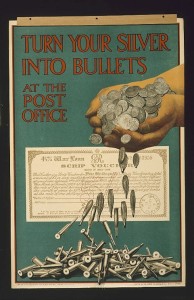Forensic firearm examiners determine whether a certain weapon fired a bullet or cartridge found at a crime scene. Early efforts linked spent ammunition with a class of weapon. Following the 1862 shooting of Confederate General Stonewall Jackson, for example, investigators concluded that the General had been accidentally shot by his own side. The spherical projectile removed from the General had been fired from a smooth-bore musket, a type of weapon that the Union Army no longer used.
In 1912, Professor Victor Balthazard at the University of Paris formulated the basic principles of firearms examination. Using enlarged photographs, he compared marks created by a firearm on the surface of bullets and cartridge cases found at a crime scene with marks on ammunition that he had fired from a suspect weapon. In this way, he could connect crime scene ammunition to a particular firearm.
During the 1920s in New York, four men rediscovered Balthazard’s principles and initiated modern firearms identification: Charles E. Waite, Calvin Goddard, Philip O. Gravelle, and John E. Fisher. Gravelle had extensive experience with a comparison microscope to study fine details in cloth patterns. He suggested that they might be able to use the instrument to compare fired bullets and cases.
In a signal event of firearms identification, the group bought two comparison microscopes and modified them. They added a comparison bridge, and rotatable mounts for bullets and cartridge cases. Through the eyepiece of the bridge, two pieces of spent ammunition could be examined, one on each stage of the two microscopes.
Police departments and the courts became aware of the value of “fingerprinting” bullets, especially after Goddard testified about his findings in the 1929 St. Valentine’s Day Massacre. Within a decade, firearms identification became an established technique of criminal investigation.

